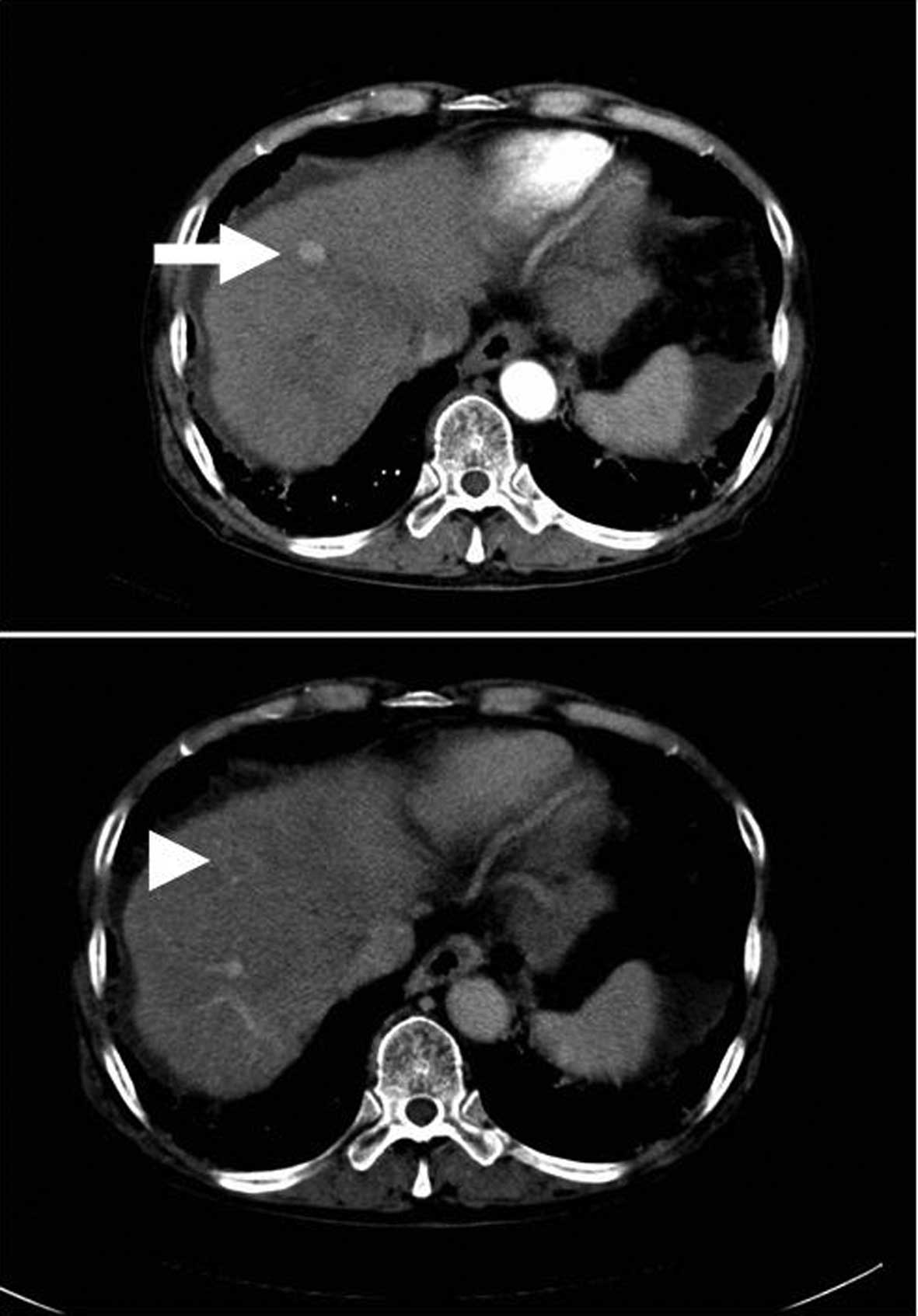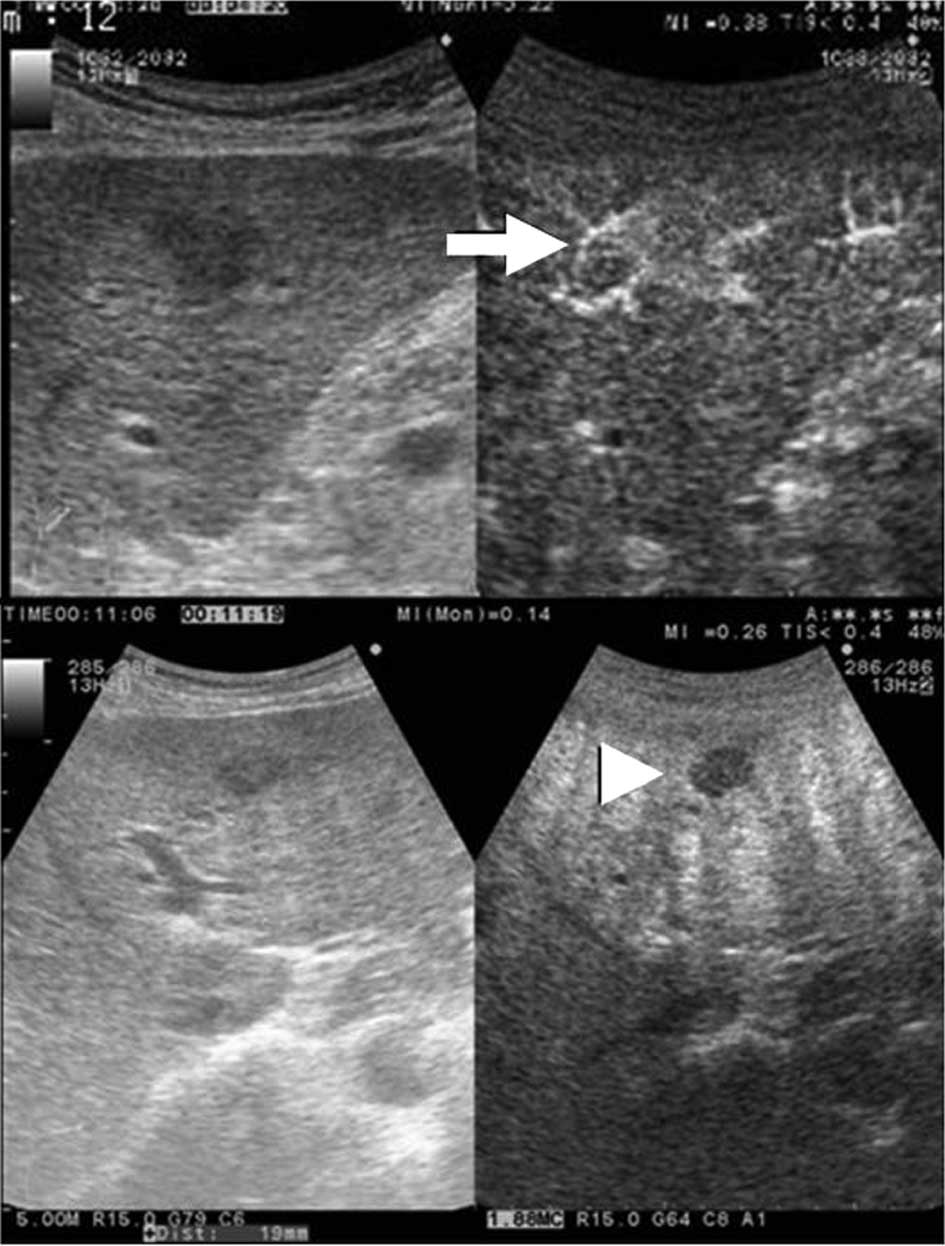Evaluation of contrast-enhanced ultrasonography using perfluorobutane (Sonazoid®) in patients with small hepatocellular carcinoma: Comparison with dynamic computed tomography
- Authors:
- Published online on: May 1, 2010 https://doi.org/10.3892/ol_00000085
- Pages: 485-488
Metrics:
Total
Views: 0 (Spandidos Publications: | PMC Statistics:
)
Total PDF Downloads: 0 (Spandidos Publications: | PMC Statistics:
)
Abstract
This study aimed to elucidate the efficacy of contrast-enhanced ultrasonography (CEUS) with perfluorobutane (Sonazoid®) in the diagnosis of hepatocellular carcinomas (HCCs), particularly small HCCs, by comparing the results with dynamic computed tomography (Dy-CT). Seventy-nine nodules in 69 patients with chronic liver disease, suspected as HCCs were studied. The nodules were selected based on the results of B-mode ultrasonography and/or Dy-CT conducted between January and August 2007. The nodules were divided into two groups: the S-group with tumors ≤2 cm (49 nodules), and the L-group with tumors >2 cm (30 nodules). Typical HCCs were defined, and the nodules were enhanced and shown as defects in the arterial and late phase of Dy-CT, respectively. Target lesions were scanned using CEUS, and the results were compared with those of Dy-CT. The L-group nodules diagnosed as HCCs using Dy-CT were also diagnosed as HCCs using CEUS. In the S-group, the diagnostic sensitivity of CEUS was 94.7% and the specificity was 81.8%. We diagnosed two liver tumors that were detected by CEUS but not by Dy-CT; biopsies revealed one tumor to be a well-differentiated HCC and the other to be an atypical adenomatous hyperplasia. The sensitivity and specificity of CEUS against HCC were high even in the small-size HCCs. Thus, Sonazoid is useful in the screening for small HCCs.












